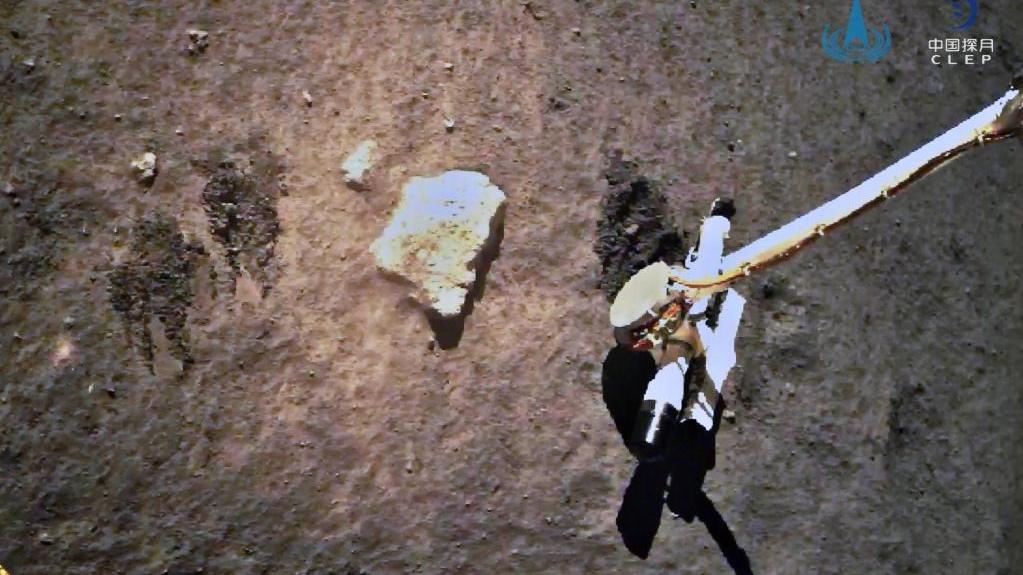 This photo provided by the China National Space Administration shows Chang'e 5 probe gathering samples on the moon on Dec 2, 2020. (PHOTO / XINHUA)
This photo provided by the China National Space Administration shows Chang'e 5 probe gathering samples on the moon on Dec 2, 2020. (PHOTO / XINHUA)
HEFEI - A senior Chinese space expert on Tuesday unveiled a plan for the construction of the International Lunar Research Station initiated by China and extended an invitation to organizations and scientists around the world to participate in the program.
The building of the International Lunar Research Station will be carried out in three phases, with a basic model of the station expected to be completed by around 2030, said Wu Weiren, chief designer of China's lunar exploration program.
Wu made the remarks during a speech at the International Deep Space Exploration Conference held in Hefei, the capital of east China's Anhui province.
According to the scientist, the upcoming Chang'e-6, Chang'e-7, and Chang'e-8 missions will play an important role in the first phase of construction of the research station to form the basic model of the research station.
During Tuesday's event, Wu Weiren, chief designer of China's lunar exploration program, also highlighted the cooperation initiative for countries, organizations, and scientists worldwide to join the construction of the research station. In 2021, the China National Space Administration (CNSA) released a partnership guideline for the International Lunar Research Station
Chang'e-6 will be launched around 2024 to collect samples from the far side of the moon while Chang'e-7 will be launched around 2026 to carry out a detailed investigation of the environment and resources of the lunar south pole, Wu said.
ALSO READ: Chang'e 8 to test use of 3D printing tech to build on moon
He added that Chang'e-8 will be launched around 2028 to conduct experiments on lunar resource utilization and build a basic model of the International Lunar Research Station.
In the second phase, the basic model of the research station is set to undergo improvements by 2040, enabling scientists to carry out research on the Sun-Earth-Moon space environment. Meanwhile, a satellite constellation named Queqiao (Magpie Bridge) will be developed to provide communications, navigation and remote-sensing services for manned lunar landings and deep space exploration such as Mars and Venus, Wu said.
In the third phase, the research station will be gradually upgraded from a scientific research-oriented experimental station to an application-oriented and multifunctional lunar base, he noted.
During Tuesday's event, Wu also highlighted the cooperation initiative for countries, organizations, and scientists worldwide to join the construction of the research station. In 2021, the China National Space Administration (CNSA) released a partnership guideline for the International Lunar Research Station.
According to the CNSA, the research station will operate autonomously for a long period of time, with short-term human participation.
READ MORE: Taikonaut sparks enthusiasm for space as China marks Space Day
The International Deep Space Exploration Conference is one of the major activities held to celebrate the Space Day of China, which falls on April 24. In 2016, China selected this date to celebrate space day in honor of the launch of its first satellite "Dongfanghong-1" into space on April 24, 1970.


